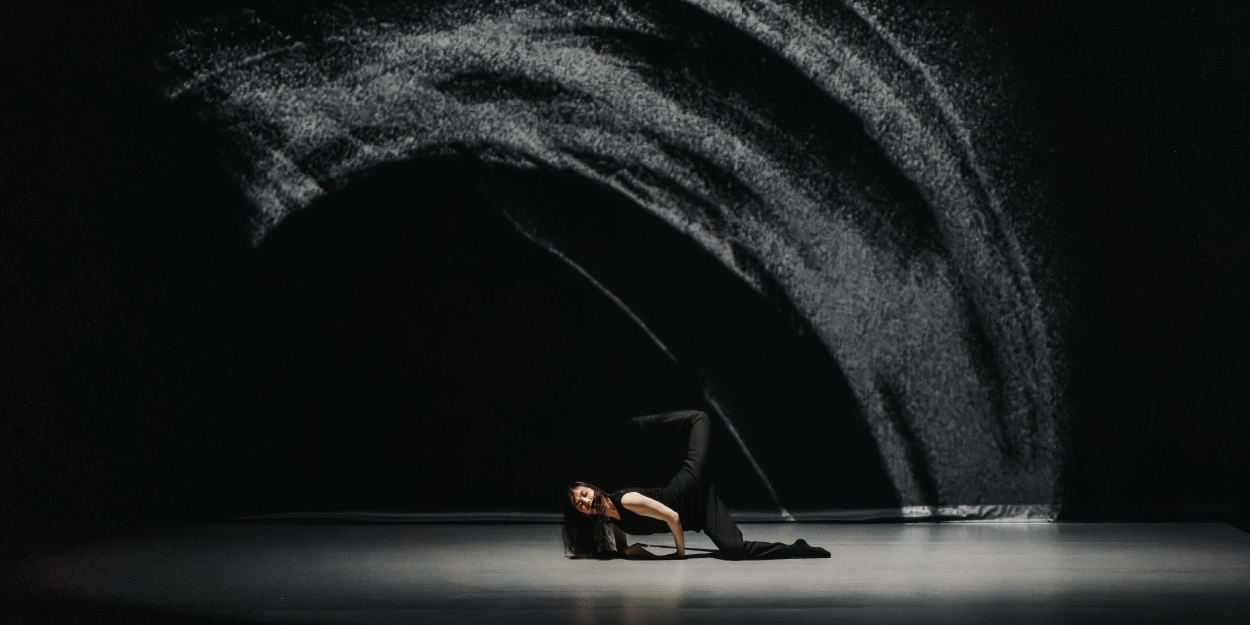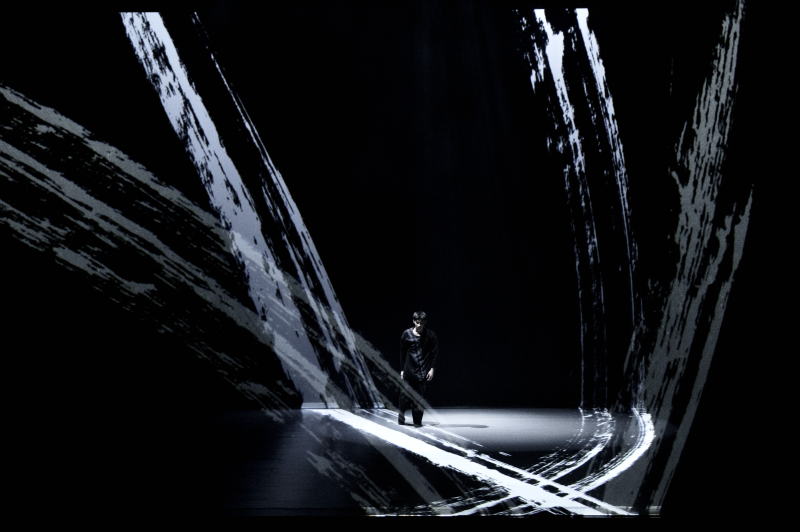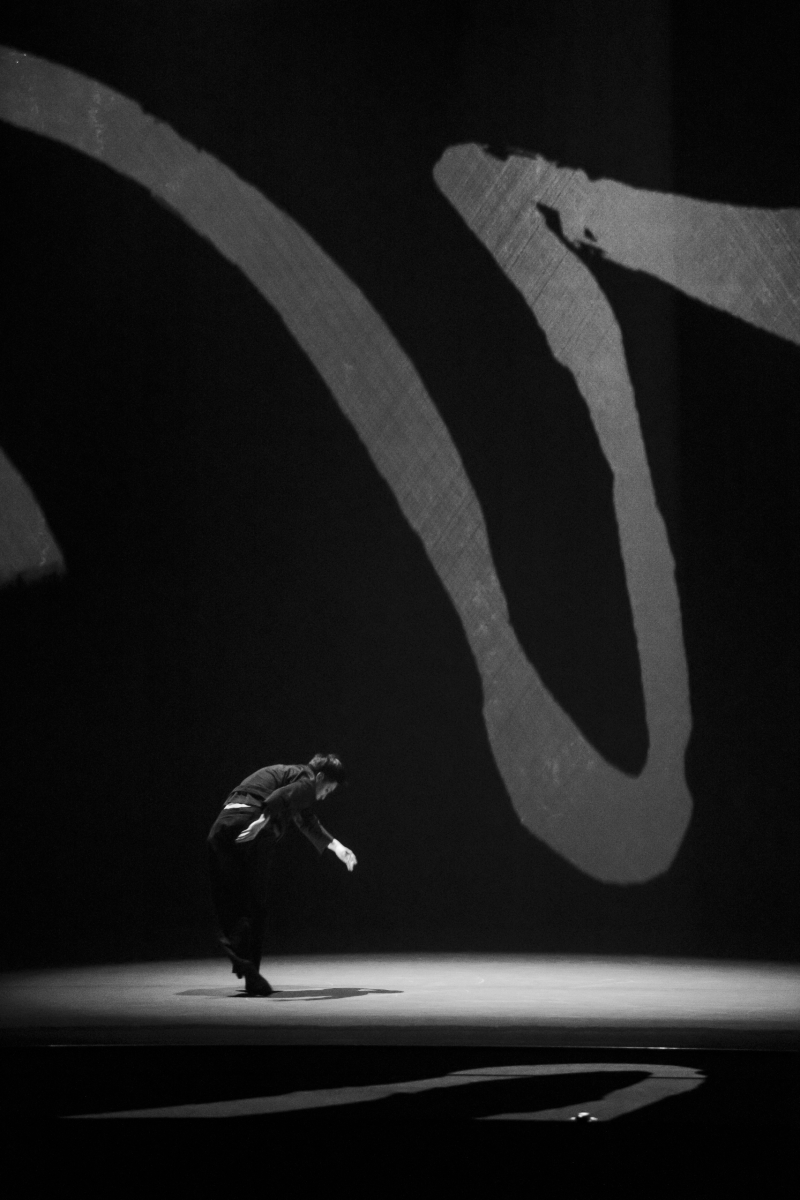Interview: Joni Lorraine with Huang Yi on INK at Bass Concert Hall
One Night Only! Nov 7th

Huang Yi is a celebrated Taiwanese artist, inventor, and robotics engineer known for his unique work blending technology, art, and dance. He is widely recognized for his groundbreaking integration of industrial robots into dance performances.
With a background in classical music and dance, paired with a passion for engineering, Huang Yi creates unique interdisciplinary experiences. He’s received numerous accolades for his contributions, performing on major stages worldwide and participating in prestigious events. Huang’s groundbreaking and award-winning work, HUANG YI & KUKA, in which he and his dancers perform alongside an industrial robot he programmed, has opened the Ars Electronica Festival (Austria), TED Conference (Vancouver), and toured globally since 2015 including in Australia, the Americas, Europe, Asia, and the UAE. Huang’s stellar work has been named by Dance Magazine as one of the “25 to Watch,” and he has been Artist-in-Residence of the National Theater & Concert Hall, the National Performing Arts Center in Taiwan.
Beyond performance art, Huang Yi advocates for the intersection of art and technology, encouraging new ways of thinking about artificial intelligence, robotics, and creativity. His work inspires many and contributes to ongoing conversations about the future of human-machine collaboration in the arts. His website notes, “Yi interweaves continuous movement with mechanical and multimedia elements to create a form of dance which corresponds with the flow of data, effectively making the performer a dancing instrument.”
 In Ink, Huang Yi and audiovisual pioneer Ryoichi Kurokawa dismantle and reconstruct the lines from a hundred artworks by calligrapher Tong Yang-Tze, exploring the various textures between body, sound, visual, and space.
In Ink, Huang Yi and audiovisual pioneer Ryoichi Kurokawa dismantle and reconstruct the lines from a hundred artworks by calligrapher Tong Yang-Tze, exploring the various textures between body, sound, visual, and space.
With Huang’s explosive language and Kurokawa’s meticulous artistry, INK transcends borders, reflecting the harmonic tension between ancient practice and future design.
In an email interview, Huang Yi shared with us some of his thoughts about this, his latest project.
How does “Ink” connect to your personal experiences or cultural background?
In my early education, calligraphy was something every child learned. However, as I grew up and computers became prevalent, I was almost exclusively typing on a computer after high school. The opportunities to write by hand diminished with age, eventually becoming limited to filling out official documents. Given that my creative work heavily incorporates technology, I found myself quite distant from calligraphy. Aside from viewing exhibitions, I rarely had the chance to engage with it. “Ink” gave me the precious opportunity to engage with my roots once again.
What inspired you to create “Ink,” and how did the concept evolve?
The Artistic Director of the National Theater contacted me and told me that Master Tong Yang-Tze had seen my work and wanted to know if I was interested in incorporating calligraphy into my creations. In Taiwan, everyone knows Master Tong Yang-Tze; she is a highly respected calligrapher.
After initially understanding her expectations and ideas, I asked her to wait for a while because I felt I wasn’t mature enough artistically at the time and feared mishandling her work. That “wait” ended up lasting about ten years. During those years, whenever possible, I brainstormed the structure of “Ink” with Ryoichi Kurokawa, researched suitable technologies, and continuously worked on music selection. Choosing music is a crucial part of my creative process, and I often spend a long time on it. For “Ink,” it took several years to find the most fitting music. Once I gradually found music that embodied Master Tong’s fusion of contemporary and classical styles, I officially initiated the production.
Were there any unexpected technical difficulties during the creation or performances?How did you overcome them?
There were two unexpected situations. First, not every theater’s orchestra pit allows for elevation changes during the performance. I used a 3D environment to simulate the audience’s perspective and found the optimal balance point, eliminating the need to raise or lower the orchestra pit during the performance.
The second one was not a difficulty but a new discovery. I used to dislike holographic projection because the transparency wasn’t high enough. However, I found a highly transparent holographic projection screen, and the image quality amazed me. Under ideal lighting conditions, Master Tong Yang-Tze’s calligraphic lines appeared to float in the air, retaining detailed textures—they were incredibly beautiful and powerful. The advancement of new technology completely changed my perception of holographic projection, and I look forward to its future developments.
What was the collaborative process like with the dancers and the technology team?
Our “technology team” is not large; primarily- it’s Technical Director Chia-Liang Lin and me, along with programming assistant Cheng-Yu Hsieh. Together, we handled all the technical configurations. After confirming the technical framework, we collaborated with Ryoichi Kurokawa to finalize the specifications for the visuals and began production. Because of my cross-disciplinary background, I deeply understand how cross-field abilities positively impact thinking patterns. Therefore, I encourage the dancers to participate in the production besides performing on stage. Installing the KUKA robots involves many intricate details, and some of the dancers also participate in this process. Members of Huang Yi Studio often possess another skill besides dance—some in costume design, others in programming or technology. I greatly enjoy an environment where everyone brings different strengths to the table, helping us avoid becoming too similar. I believe individual uniqueness is a precious gift that should be protected and cherished.

What do you hope the audience takes away from the interplay between human and machine in “Ink”?
Exploring creation and performance with robots has been a long-term subject of my research. This time, collaborating with Master Tong Yang-Tze and Ryoichi Kurokawa, and interpreting the dynamics of calligraphic lines through two KUKA robots, I hope to share the beauty of calligraphic lines with the audience through a trio dance with the robots. Calligraphy is profoundly contemporary.
The relationship between humans and technology is complex. What message do you think “Ink” sends about this dynamic?
For me, humans and technology coexist harmoniously. Through “Ink,” we collectively explore the timeless beauty of the art of calligraphy, and think about what the future will bring us.
There is only one opportunity to see the remarkable INK.
INK
NOV 7, 2024 - 7:30 PM
BASS CONCERT HALL
2350 Robert Dedman Dr
Austin, TX 78712
The performance is made possible by the generous support of the Ministry of Culture (Taiwan)
To learn more about this work visit:
https://www.sozoartists.com/ink
Comments

Videos

